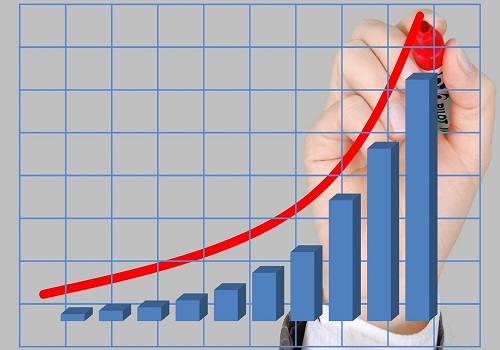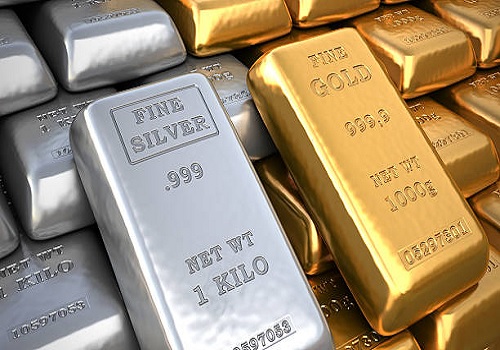Gold Outlook for September - 23 by Chirag Mehta, CIO & Ghazal Jain, Fund Manager, Quantum AMC

Bewlo The Gold Outlook for Sept -23 by Chirag Mehta, CIO & Ghazal Jain, Fund Manager, Quantum AMC.
Gold Outlook -September 2023
International gold prices were on the backfoot for most of August touching lows of $1890 per ounce before ending the month only 0.58% lower at $1944.2 per ounce. The biggest headwind for the precious metal during the month was the yield on US 10-year inflation-protected Treasuries which touched 2% for the first time since the Global Financial Crisis of 2008 after starting the month at 1.6%. Dollar too strengthened in August from 102 levels to 104, partly driven by the bond market, but also reflecting the relatively better economic outlook of the US compared to Eurozone and China. However, both US yields and US dollar moderated by the end of the month. Domestic gold prices closed the month 0.22% lower, aided by the Indian Rupee which depreciated by 0.52%.
5 things that moved gold markets in August
1)Fitch Ratings downgraded US government debt from AAA to AA+ over stretched fiscal policy and repeated political disputes over the debt ceiling. US treasury yields moved up marginally in reaction. Gold markets were muted as the metal was stuck between increased risk aversion on the one hand and higher opportunity cost of holding gold and US economic resilience on the other.
Our take:
While the credit rating downgrade had a limited impact on markets for the time being, US national debt has crossed $32 trillion and the country’s debt to GDP ratio stands close to 120%. The US government has borrowed $1 trillion since the debt ceiling was suspended in June. A combination of higher debt and the US weaponizing its currency and issuing sanctions at will is incrementally dissuading external buyers of US debt. Also, with interest rates elevated and the US Presidential election in sight, fiscal spending is unlikely to come down. If inflation continues to ease, the Fed will be cutting rates in 2024, bringing the US government's borrowing costs down. But if inflation remains high and the Fed is forced to keep interest rates higher for longer, then the US debt dynamics could become unsustainable, which would be supportive of gold prices.
2) The US economy added 187,000 jobs in July, lower than market estimates of 200,000, while the unemployment rate moved lower to 3.5% from 3.6% in June. Average Hourly Earnings in July remained stable at 0.4% m-o-m increase and 4.4% y-o-y increase. There was a downward revision in nonfarm payroll employment numbers for May and June, which were adjusted lower by 25,000 and 24,000, respectively. Despite a miss on job additions, stable unemployment and the rise in hourly earnings indicate US labor market resilience. Gold’s August decline began around this time.
Our take:
While US labour market strength continues to be a headwind for gold prices, the YTM average for non-farm payrolls is now around +290K in 2023 against +385K in 2022 and +444K in 2021, indicating labour market is losing momentum. But wage inflation is unlikely to cool till overall inflationary pressure subsides and more importantly the US labour participation rate moves up. It currently stands at 62.6%, 30 basis points below the pre-pandemic level.
3) Inflation in the US, as measured by the change in the Consumer Price Index (CPI), rose to 3.2% on a yearly basis in July from 3% in June. The Core CPI inflation, which excludes volatile food and energy prices, edged lower to 4.7% from 4.8%. Gold slipped below $1900 per ounce in the following days.
Our take:
Uptick in headline inflation was a result of rising energy prices, which will be a key variable going forward. Core prices continue to show signs of easing which is a positive as it helps make a case to hold rates steady in September. But as favorable base effects move out, the y-o-y numbers aren't expected to slow much more this year. Federal Reserve policy can thus be expected to remain tight to prevent a flare-up in inflation. Higher rates for longer will cap gains in gold prices in the near term.
4) Business activity in the US private sector expanded at a slower pace in early August, with S&P Global Composite PMI falling to 50.4 from 52 in July. The data came in lower than the market expectation of 52. Manufacturing PMI dropped to 47 from 49 while the Services PMI edged lower to 51 from 52.4. US Treasury yields and US dollar cooled off in reaction and gold moved back above the $1900 mark.
Our take:
The survey shows that the private sector activity is now only marginally above the 50-mark which separates expansion from contraction. Also, the support to growth from service sector seems to be fading now, while manufacturing continues to slow. This raises doubts over the strength of US economic growth in the second half of 2023. A slowing economy will weigh on the Fed’s future interest rate decisions and will be a tailwind for gold prices.
5) At the annual central bank symposium at Jackson Hole, Fed Chair Powell acknowledged that the US economy wasn’t cooling as expected and reiterated that though it is easing, inflation remains high. He said the Fed is prepared to raise rates further if required and keep them at a restrictive level until inflation moves closer to their target. Though Powell’s comments were widely viewed as hawkish, gold prices didn’t see much action as markets were awaiting the release of other key economic data before the September 19-20 Fed meeting.
Our take:
The Fed pivot narrative was gathering steam in the last couple of months which had led gold to run up. With US economic growth surprising on the upside and core inflation looking sticky, the Fed is pushing back hard against that narrative to avoid inflation expectations from becoming unanchored. It remains to be seen whether despite this hawkish rhetoric, the Fed can afford another rate hike. Till clarity emerges on this front, gold prices will remain rangebound with a downside bias.
Outlook for September
While investors broadly expect the Fed to keep rates on hold in September , they have also pushed back bets of interest rate cuts to June 2024. More rate hikes or bets for more rate hikes by the Federal Reserve and growing narrative of a US soft landing will keep a lid on prices in the near term. The downside, meanwhile, seems limited in the wake of worries about Fed overtightening, a potential US recession, rising US debt levels, sticky inflation, central bank gold buying and geopolitical tensions. Investors can continue to buy on dips and build their gold allocation. With savings from the pandemic era dwindling, credit card debt rising and interest rates staying high, risk of a hard landing for the US economy remains. As the street acknowledges the slowdown and as it that starts reflecting in asset markets, the Fed may be compelled to take a u turn, bringing renewed bids for gold.
Above views are of the author and not of the website kindly read disclaimer



















